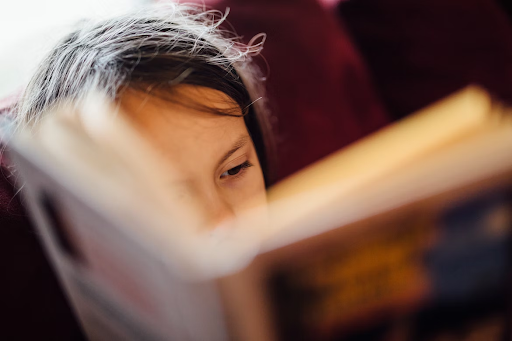Teachers who successfully merge the Heart, the Art and the Science of Reading in their classrooms see 90% of their children reading at grade level in kindergarten, grade one, grade two and therefore, likely for the rest of their school experience.
Then why is it that as many as 40% of Canadian grade three students, and over 60% of American grade four students are not reading at-grade level?
The reason? As educators, we have not learned how to effectively balance the scientific needs of children to become fluent readers while at the same time embedding our teaching strategies with both art and heart.
Over the decades, we have excelled at implementing many effective classroom practices that were designed by innovative classroom teachers and academics. We can be proud of our learning as educators and the many achievements of our most struggling learners.
However, researchers like Dr. Clyde Hertzman, Dr. Kilpatrick and other medical experts advise that over 90% of all children are capable of reading at-grade level; the only exceptions would be children who have diagnosed medical challenges, and children who will require expert medical assistance and additional classroom support.
Setting Things Right with Heart, Art and Science
By understanding the true potential of reading success, and exploring the components of Heart, Art and Science, we can establish effective approaches that support reading development.
So, how do we embed the Heart, the Art, and the Science in ways that will help us reach that essential goal of a 90% success rate for our young children?
Let’s examine each component:
The Heart in Reading

Heart cannot be learned, and this is what makes teachers so special. Most educators enter the profession for the singular purpose of working to support children as they learn. This requires the central characteristic of a love for children, a joy that automatically surfaces as we work and play, a natural inclination for playfulness and celebration of progress, compassion for moments of a child’s anxiety, insecurity and struggles, and unlimited patience for each individual child.
Teachers who don’t possess these qualities or can’t develop them, rarely last in the profession.
I remember when I was in grade three in the 1950’s, our student rows were competing in a choral reading exercise where we were expected to read simultaneously with expression. My row included a struggling student who simply was incapable of keeping up with the rest of us. The result? At the close of the competition, our row was required to stand while the teacher walked down our row hitting each of us on the shoulder with her pointer as punishment. No heart there!
The heart of reading lies in its transformative power to foster empathy and understanding. Reading, after all, is much more than decoding words on a page, but rather an immersive experience that allows the child to connect with others.
In the incident described, the student exerted his best effort, despite his difficulties, showing a genuine desire to engage with the text. The heart of reading is needed because it builds the perseverance to learn and shows all early learners the profound impact reading words can have on their lives. It reminds us to approach the act of reading with patience and encouragement.
The Art in Reading

Dr. Tim Rasinski, international expert in the field of fluency, comprehension and word studies, recently penned a new book with colleagues titled Artfully Teaching the Science of Reading. He eloquently describes the interdependence of artful teaching with the science of reading:
“Science yes, but also a Need for Art. We contend through this book that what is missing from a ‘science-only’ approach to reading instruction is an equal emphasis on what we term “artfulness” in teaching reading. An artful and scientific approach to reading instruction not only focuses on the need for developing proficiency in the various scientifically identified reading competencies and high achievement in overall reading proficiency, but also aims to develop in students a positive attitude towards reading and an inclination toward a lifelong engagement with reading. Even scientists who have studied reading note the importance of artfulness necessary for reading instruction.”
He continues to say:
“…but teachers should still have the space for making pedagogical decisions about how reading instruction actually occurs. It is in this space that teachers are encouraged to be artful. The most effective teachers are ones who embrace both a scientific and artful disposition toward their reading instruction…If you want to be a truly effective teacher, you must be an artist as well as a scientist.”
The artful dimension of reading instruction acknowledges that teachers play a pivotal role in shaping the learning experience. They know their students best, and thus can create dynamic and engaging environments, and design meaningful learning activities that best resonate with their class. There is space for artistry here which allows them to tap into their creativity, while at the same time adhering to the scientific aspect of reading instruction.
The Science of Reading

Why does this term scare so many teachers, and why are so many parents demanding it in their children’s classrooms? Parents are demanding it because in most grade four classrooms across North America – according to post-covid statistics – the majority of children are not reading fluently.
It becomes very challenging (and expensive) for school systems to help those struggling readers catch up beyond grade four. Many of these children feel defeated and are tired of the continual difficulties they encounter; parents’ dreams of their child’s post-secondary careers are drowning while they helplessly watch their child struggle to read; the school system does not always have the resources needed to change the trajectory on which most of these children are travelling.
Why is the school system struggling to support almost half of the student population? Even pre-covid, the system was not doing much better for young readers.
Prior to the year 2000, there were very few reliable brain research studies in the field of early literacy; this ultimately resulted in random and inconsistent creation and selection of early reading programs. There were the “Reading Wars” in the 1980’s and 1990’s where some educators made radical, unbalanced, and subjective choices of instructional strategies. The resulting inequities in the system were the inevitable outcome.
Let’s simplify and clarify the Science of Reading discussion.
The Science of Reading is based on multiple banks of excellent quality research projects that studied thousands of effective and successful reading programs in real classrooms (The National Reading Panel, 2000; The NELP Report (2009), National Early Literacy Panel (2000), the National Association for the Education of Young Children, (2022) to name just a few). These studies concur that the following skill competencies should be part of effective and successful reading programs from pre-kindergarten to grade two:
- Phonics and Alphabet Knowledge,
- Phonological and Phonemic Awareness,
- Rapid Automatized Naming,
- Shared Reading and Writing,
- Comprehension and Fluency,
- Vocabulary and Oral Language, combined with
- Word Study, Word Families and Word Play.
There is nothing new about any of this; when I began teaching in the mid-sixties, every single one of these skill competencies was part of the basic reading programs that teachers were obliged (by law) to be used in our classrooms.
What is new is the fact that these thousands of pages of research now provide us with guidance on how to introduce these skills within playful and joyful classrooms. The research also now provides us with a sequentially ordered breakdown of the detailed skills essential for reading mastery.
Current research suggests the order within which the skills should be taught as well as the appropriate developmental stages of readiness of early learners. It connects proposed reading practices with brain research.
Heart, Art and Science Learnings In Application

Highly respected authors such as Dr. Maria Walther, Dr. Tim Rasinski, Dr. Anne Cunningham, Dr. Louisa Moat, and Dr. Linnea Ehri, among many others, have flooded the market with exceptional ‘how to’ books that support teachers with powerful implementation strategies.
In my own work (with Joyful Literacy Interventions and now with Sprig Learning) we have been able to prove that when we ensure our reading programs focus on the the seven foundational reading competencies listed above, and implement assessment, tracking and monitoring capabilities , we can bring 90% reading success to all children by the end of grade two.
In working with Sprig Learning, we have developed Sprig Reading – an intuitive and interactive teacher resource that not only assesses the foundational reading skills, but provides the instructional and classroom planning support for teachers that is needed to ensure 90% of children are reading at-grade level.
Let us embrace this new knowledge about the seven, evidence-based competencies and joyfully explore how much more effective we can be as teachers when we implement new strategies that reflect this compelling research. Let’s look forward to celebrating the increased success of our struggling learners and our own professional growth.

Dr. Janet N. Mort
About the Author
Dr. Janet Nadine Mort is an early literacy scientist who is responsible for the reading success of countless vulnerable primary learners. Upon retirement in 2007, after a 35-year career as a teacher, principal, and superintendent of schools on Vancouver Island, Mort attained a PhD in language and literacy.
Join some of the respected authors mentioned in this section for an amazing evidence-based professional development event this fall.
Find and close gaps in early literacy to achieve 90% early literacy success.

